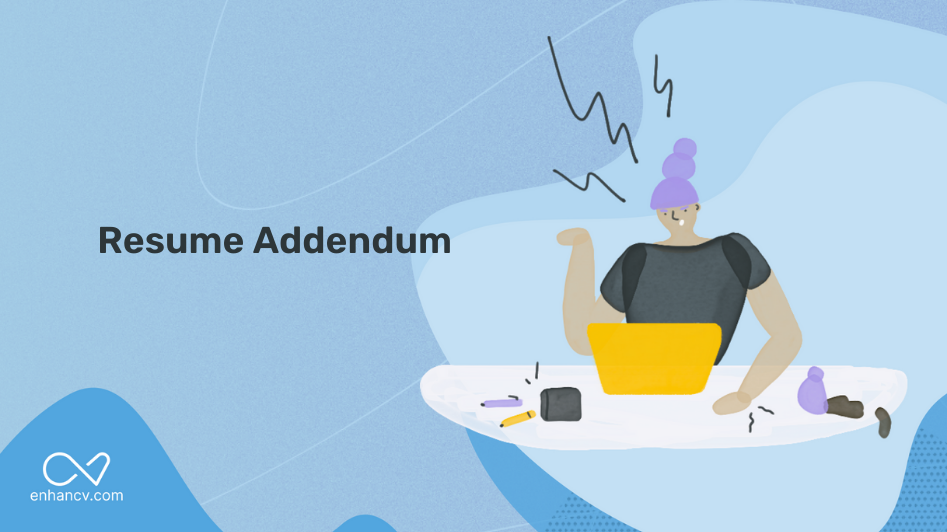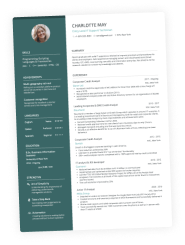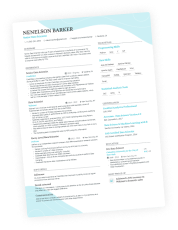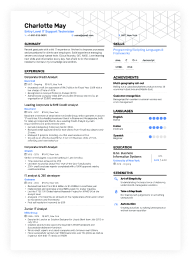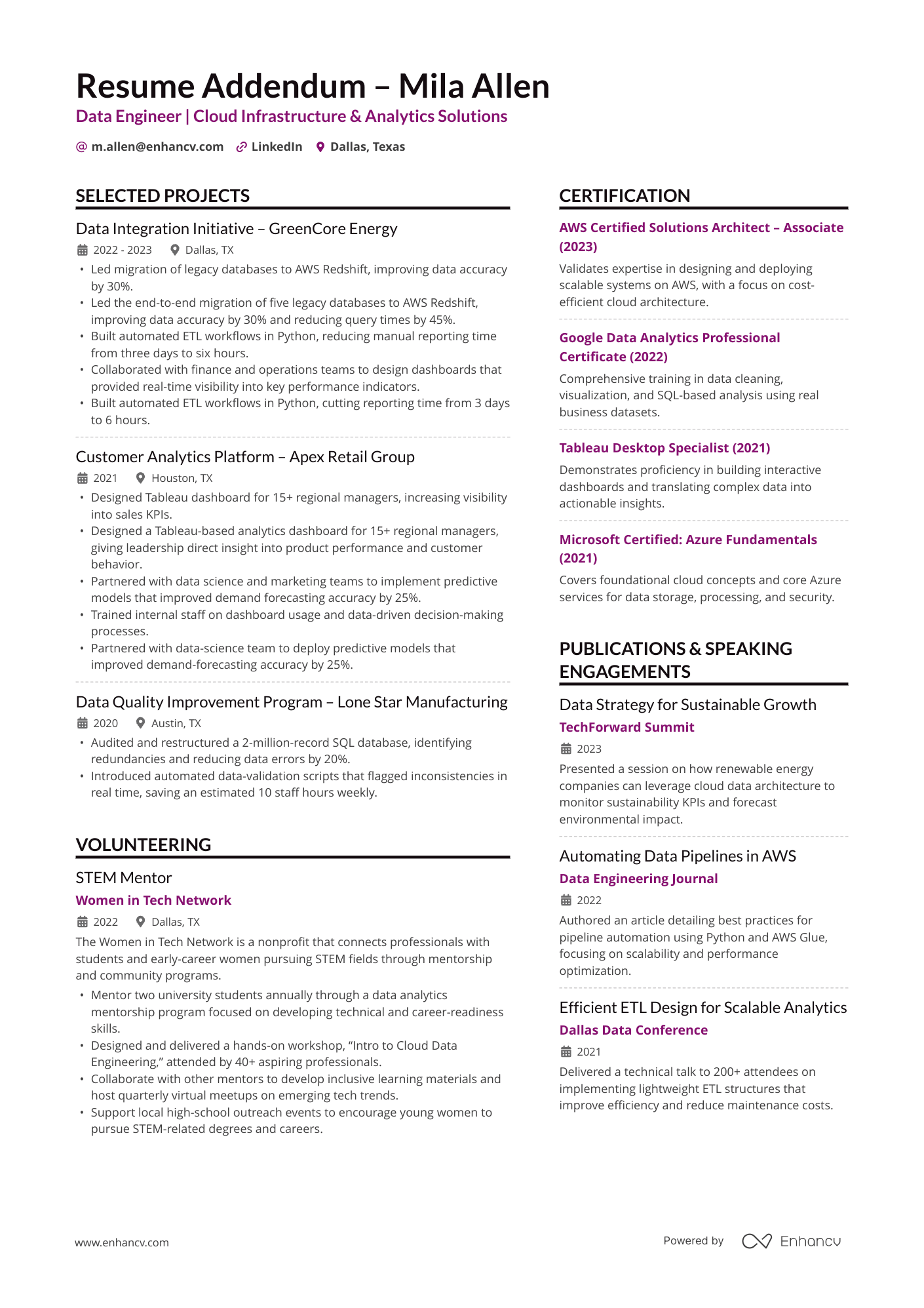You’ve trimmed your resume again and again—yet there’s still valuable experience that doesn’t fit. Maybe it’s an extended project, a list of publications, or a career gap you want to explain.
That’s when a resume addendum can help.
This guide explains what a resume addendum is, when and when not to use one, and how to write and format it for both recruiters and applicant tracking systems (ATS). You’ll also find a free addendum template to help you build yours.
Key takeaways
- A resume addendum is a separate, optional document used to include job-relevant details that don’t fit on your main resume.
- It’s most useful for technical, executive, or academic professionals with extensive projects, research, or certifications.
- Avoid including irrelevant or redundant information—U.S. resumes should stay concise and targeted.
- Format your addendum consistently: one page, same header and style, saved as a PDF or DOCX.
- Submit it only when relevant or requested, and reference it briefly in your cover letter.
- Never merge it with your resume. If needed, note that more information is available upon request.
What is a resume addendum?
A resume addendum (sometimes called a resume supplement, resume appendix, or addendum letter) is a separate document you attach to your resume when you need extra space to provide additional details.
It’s typically used in senior, technical, or academic roles—or in cases where you have specialized projects, research, or credentials that deserve more context.
Consider it when you need more space to showcase supporting information—like detailed project outcomes or professional activities that go beyond your resume’s core summary.
Common content types for an addendum
- Long lists of software/tech/skills
- Publications/speaking engagements
- Board/committee service
- Extended projects or research
- Employment gaps or dips needing explanation
- Certifications/trainings that didn’t fit
In my work as a Certified Professional Résumé Writer, I’ve seen candidates use addenda both effectively and unnecessarily. The best results come when an addendum is intentional—used to expand on complex, high-value achievements rather than to explain or justify career history. You can do the latter in an interview.
Author’s take
How it differs from other job application documents
You might be wondering—how is a resume addendum different from a cover letter or a portfolio? Here’s how it compares to other common documents in your job application, and when each one makes sense.
Resume Addendum vs Other Application Materials
| Document | Purpose |
|---|---|
| Resume addendum | A separate, optional document that expands on your resume with additional details that don’t fit naturally on your main resume. |
| Resume | A summary of your most relevant experience, skills, and education. It’s the core document every application needs. |
| Cover letter | Explains your motivation, personality, and fit for the role. |
| References page | Lists professional contacts who can verify your experience and character. Usually provided later in the hiring process or when requested. |
| Portfolio/Link | Displays creative, technical, or project-based work samples. Best for design, writing, marketing, or engineering roles. |
When to use a resume addendum
Here is when to use a resume addendum and when it’s best to avoid it.
Use it when:
- You have many relevant credentials (certifications, projects, awards) that don’t fit into your resume, but are directly relevant to the job, and you want to give them more context.
- You’re in a technical, academic, or senior/executive role where you have multiple major projects, publications, or speaking engagements, and want to provide additional detail.
- Your main resume is already full of core content, but you have extra, job-relevant items that you don’t want to bury within or clutter up the main page(s).
Avoid it if:
- You’re early in your career or you can easily integrate your extra credentials/projects into the existing resume.
- The information is peripheral or only tangentially related—including it might dilute rather than strengthen your message.
- The application system you’re using only allows one file upload, and you can’t reliably indicate a second document—in that case, integrate essentials into the resume itself.
- Recruiters aren’t expecting it. In most corporate or entry- to mid-level roles, recruiters focus on the resume and cover letter only. An unsolicited addendum may be overlooked or seem unnecessary if the role doesn’t demand extensive credentials or publications.
In the U.S., resumes are expected to be targeted and concise—focused only on experience, skills, and results that directly relate to the job you’re applying for.
Including irrelevant or outdated information (even in a resume addendum) can weaken your application by distracting from your strongest qualifications.
Remember, an addendum isn’t a catch-all for everything you can’t find a place for. It should still remain strategic.
Before creating an addendum, try using Enhancv’s Tailoring Tool to refine your main resume for each job description. You may find that a well-tailored resume covers everything you need without requiring an extra document.
How to format and submit a resume addendum
Once you’ve decided a resume addendum makes sense, structure it so it looks professional, matches your main resume, and is easy for both recruiters and applicant tracking systems (ATS) to read.
Be selective. An addendum can draw unnecessary attention to areas you might prefer to discuss later. Include only information that clearly strengthens your application and aligns with the job’s focus.
How to format it
The addendum is a separate PDF or DOC attachment, but it should look and feel like the rest of your application package. Include the following elements:
- Header: Match the same header, font, and style as your resume.
- Length: Keep it up to one page.
- Layout: Use bullet points and clear section headings.
- File type: Save as PDF or DOCX—avoid image-based or overly designed files, as these might be a problem for the ATS.
- File name: Make it clear, something like Resume Addendum – [Your Name] or Firstname_Lastname_Resume_Addendum.
PRO TIP
If you’re using an addendum to address a career gap, academic setback, or other sensitive situation, keep it factual and forward-focused. Explain, don’t excuse. Briefly state what happened, what you learned, or how you stayed active, then move on to your results and strengths. The goal is to provide context, not justification.
Once your addendum and main resume are complete, run them through our Resume Checker to make sure formatting, structure, and keywords are ATS-friendly.
Is your resume good enough?
Drop your resume here or choose a file. PDF & DOCX only. Max 2MB file size.
How to submit
- Submit it only when relevant or requested.
- Attach it as a separate file after your resume and cover letter.
- Mention it briefly in your cover letter so the recruiter knows what it adds.
- You can also bring it to the interview or use it as a leave-behind document for roles that require deeper discussion (e.g., executive, academic, or consulting positions).
If the online system accepts just one file, don’t merge the addendum with your resume. Instead, include a short note within the relevant section—for example, under Publications: “Full list of publications available upon request.”
Or, if you need to reference your addendum in your cover letter, craft a personalized one in minutes with Enhancv’s Cover Letter Generator.
Drop your resume here or choose a file.
PDF & DOCX only. Max 2MB file size.
Resume addendum example
Take a look at this resume addendum example created with the Enhancv AI Builder. It goes without saying, you can create your resume there, too.
Frequently asked questions about resume addenda
Let’s clear up a few more common dilemmas around resume addenda.
Is a resume addendum only used in academia or grad school?
Not anymore. Although the term originated in academic and law-school contexts, professionals in technical, research, and executive roles sometimes use a resume addendum to share supporting details that don’t fit on the main resume.
Can a resume addendum ever hurt my application?
Yes—if it includes irrelevant or overly detailed information. An addendum should highlight only material that strengthens your case for the role. Adding unnecessary explanations or unrelated work can dilute your message.
Should I mention my addendum during the interview?
You could reference it, especially if it includes projects or achievements that can spark discussion.
Conclusion
A resume addendum gives you flexibility when your story doesn’t fit into a two-page resume.
Used strategically—and formatted correctly—it can add valuable context without overwhelming the reader.
Start building your application using Enhancv’s templates—designed to help you present every part of your professional story with clarity and confidence.
Make one that's truly you.

